What is MSG and How is it Made?
Table of Contents
What is MSG?
Popular as a seasoning and flavor enhancer, MSG, or monosodium glutamate, is the purest form of umami, the fifth taste. MSG (monosodium glutamate) is widely used to intensify and enhance taste and flavors in sauces, broths, soups and many more foods. It can also be used as a partial replacement for salt, containing just one-third the sodium, and is classified as safe by the United States Food and Drug Administration and the World Health Organization. Originally associated mainly with Asian cuisines, MSG is now used around the world to bring out the delicious flavor of foods.
Umami and MSG are two sides of the same coin: they both give us the same taste experience, both with glutamate. The glutamate in MSG is chemically indistinguishable from the glutamate present in animal and plant proteins, and our bodies metabolize both sources of glutamate in the same way. Think of salt and saltiness. Many foods taste salty, but a pinch of salt on your tongue gives you the purest taste of saltiness. When you eat MSG it triggers only one taste sensation–umami.
The Ajinomoto Group has produced the odorless white crystalline powder known as MSG for over a century, and today it is found in kitchen cupboards worldwide.
What is MSG Made of?
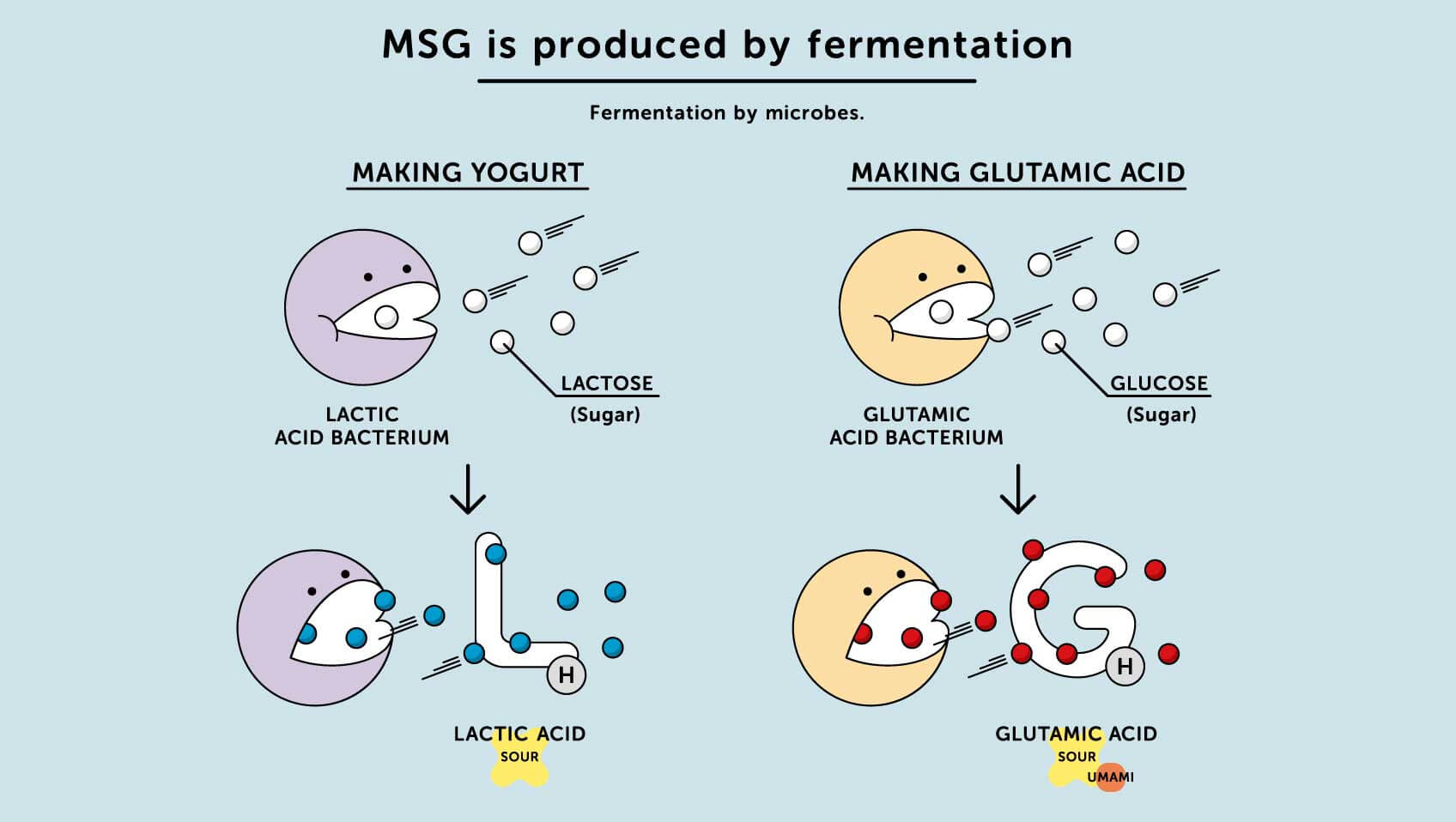
Today, the MSG (monosodium glutamate) produced by the Ajinomoto Group is produced through fermentation of plant-based ingredients such as sugar cane, sugar beets, cassava or corn. MSG is the sodium salt of glutamic acid, one of the most common naturally occurring amino acids. Glutamic acid is produced in abundance in our bodies and found in many foods we eat every day, including meat, fish, eggs and dairy products, as well as tomatoes, corn and nuts. When a protein containing glutamic acid is broken down, for example through fermentation, it becomes glutamate. Glutamate activates our taste receptors, eliciting the delicious savory taste known as umami.
How is MSG Made?
One evening over dinner in 1908, one of the Ajinomoto Group’s founders, biochemist Dr. Kikunae Ikeda, asked his wife a question that would change the history of food: What gave her vegetable and tofu soup its delicious meaty flavor? Mrs. Ikeda pointed to the dried seaweed called kombu, or kelp, that she used to make her traditional Japanese dashi, or broth. Inspired by this revelation, Dr. Ikeda set to work. Evaporating and treating his wife’s kombu broth, he was able to extract a crystalline compound, which turned out to be glutamic acid. Tasting the crystals, he recognized a distinct savory flavor he dubbed umami, based on the Japanese word umai (delicious). Dr. Ikeda soon filed a patent to produce umami in an easy-to-use form: MSG (monosodium glutamate).
The following year, the Ajinomoto Group got its start, as MSG was launched on the Japanese market. At first it was produced through the hydrolysis of gluten to extract wheat protein. Then in the 1930s there was a shift to extracting MSG from soy beans. In the 1960s production moved to the bacterial fermentation of sugar cane and similar crops in a process much like the way cheese, yogurt and wine are produced.
How Does the Fermentation Process Work?
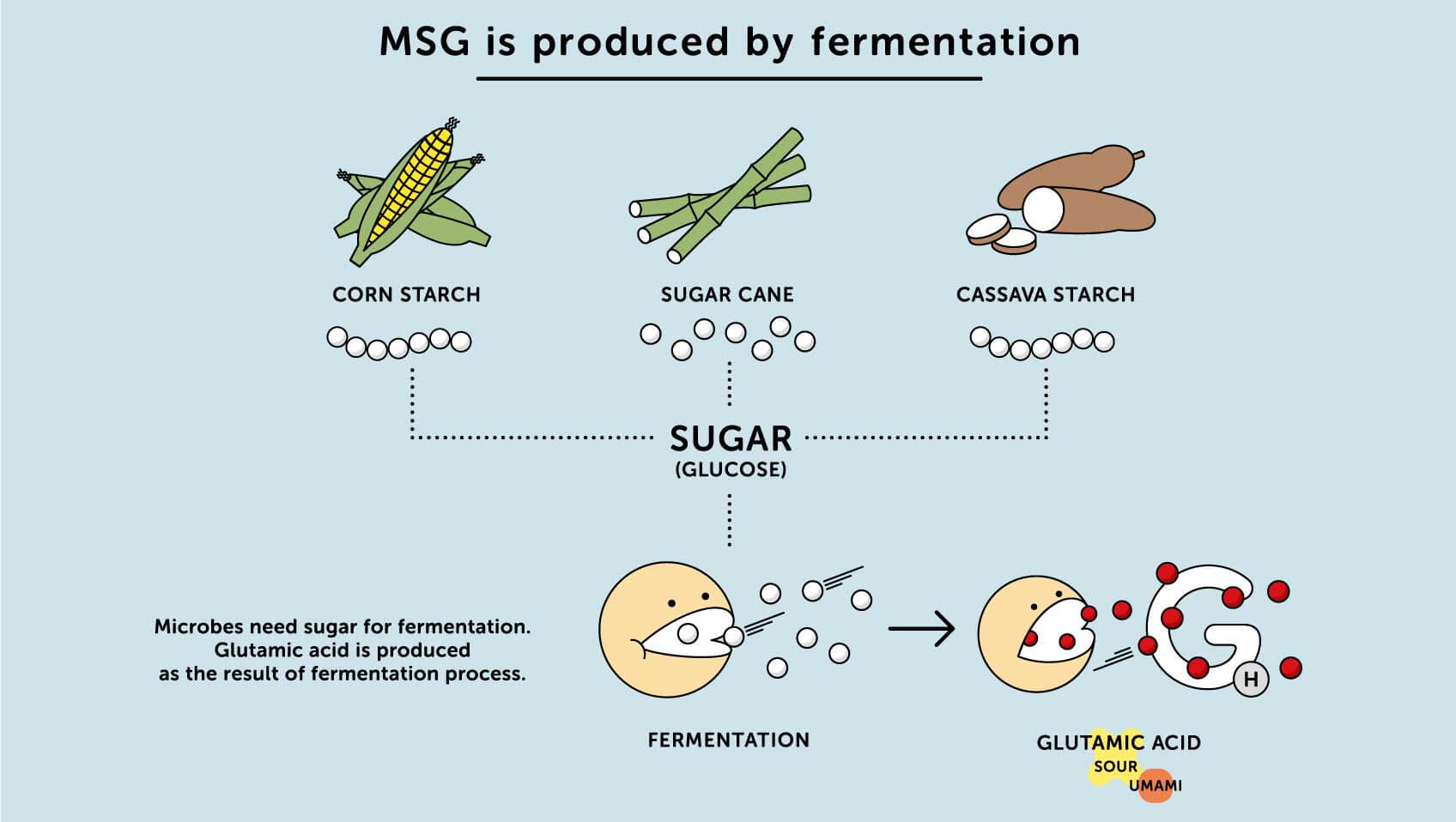
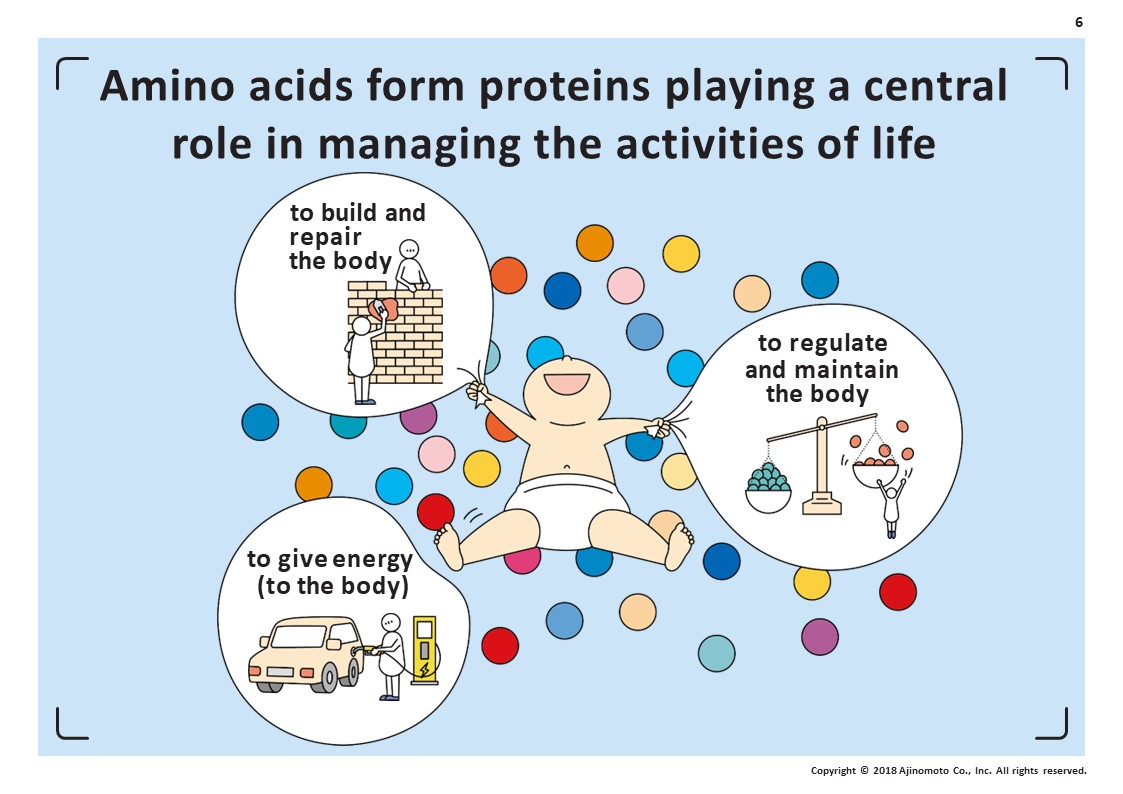
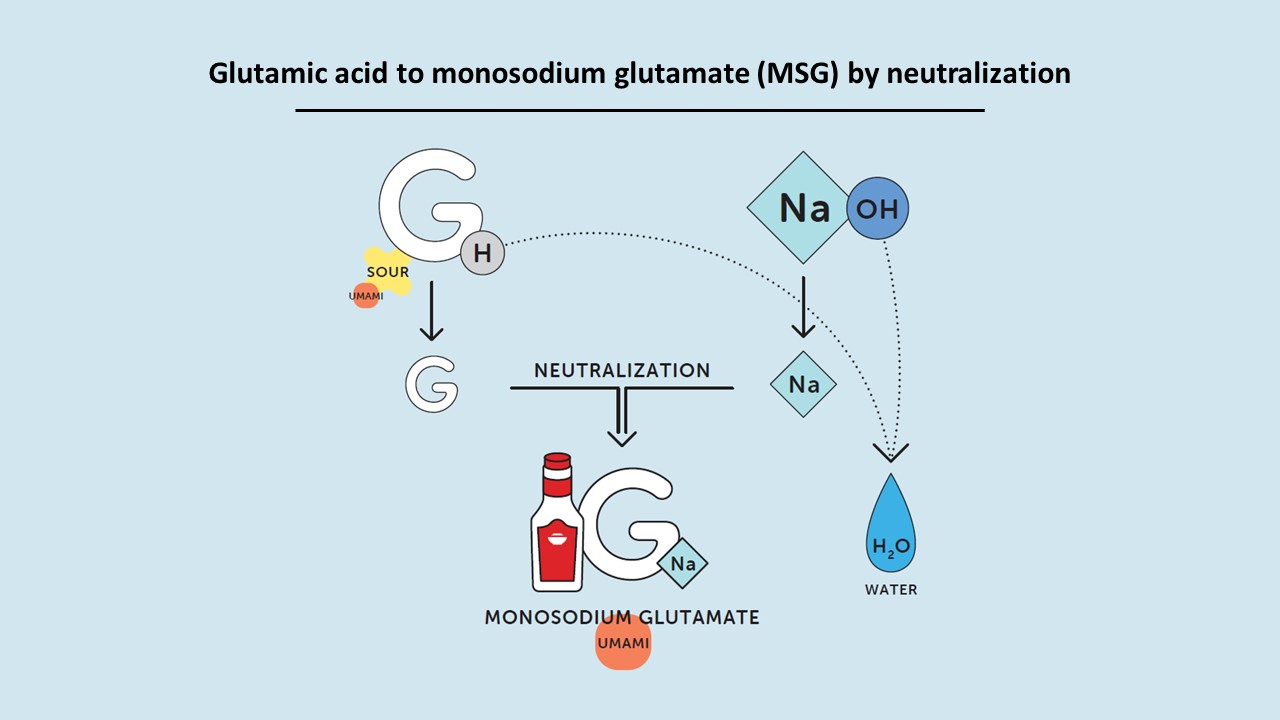
Fermentation has been used by humans for centuries as a way to preserve foods and enhance their taste. MSG (monosodium glutamate) is made of naturally occurring substances through a modern version of that process, with the help of microbes that transform feedstocks like sugarcane into food products. First, the glucose is extracted from the sugarcane and transferred to a fermentation tank, to which fermentative microbes are then added. These microbes consume the glucose, releasing glutamic acid, which though neutralization is turned into a solution that contains MSG. This solution is then decolorized and filtered, resulting in a pure MSG solution. This pure solution is crystallized using an evaporator and the crystals dried to produce the final product—MSG. The entire process has a very small environmental footprint, as its coproducts can be returned to the soil in the form of fertilizer to help grow more crops like sugarcane, forming a bio-cycle.
MSG Can be the Key to Reducing Sodium Content
Simple table salt, sodium chloride, is one of the biggest contributors to cardiovascular disease. Reducing average salt intake by 30% has been adopted as a target by the World Health Organization. The use of monosodium glutamate (MSG) can be the key to reducing sodium content without sacrificing taste.
Taste is a major driver of excess salt intake. Although MSG is mistakenly thought of as being high in sodium, it contains just one third the sodium of table salt (MSG contains approximately 12% sodium while table salt contains 39% sodium), It can enhance the perception of saltiness while preserving palatability. With the addition of MSG, sodium level in the food can be lowered by up to 40 percent while maintaining the flavor.
Research has also shown that umami-eliciting compounds like MSG can be used to reduce 11% of sodium in chicken broth and 32.5% in spicy soups. Sodium reduction in butter and cheeses can also be achieved with MSG, and a similar approach could work in meat products. MSG could also be used in snack foods and condiments, for example helping reduce the sodium content of Brazilian garlic and salt spice seasonings by up to 50%.
MSG has been classified as safe by the US FDA and the Joint FAO/WHO Expert Committee on Food Additives. The use of MSG may help food scientists reduce the sodium content without sacrificing taste, in addition to creating new, cost-effective, salt-reduced products and menus that will encourage consumers to make healthier choices.
Is MSG Bad For You?
No. Since its discovery over 100 years ago, MSG has been used safely as a food ingredient and seasoning in many different cultures.
Extensive scientific research confirms MSG’s safety and role in the diet.
How to Add Umami to Your Cooking
A yummy meal is always one of the great reasons for that smile on your face. Relishing a flavorful meal, even after a very long day, when you’ve been running around the clock, feels delightful! Wondering how to amp up your own cooking with umami goodness? It’s simpler than you think. Follow our easy tips and you can have an umami-rich experience with every meal!
Umami Recipes
Are you interested in traveling and tasting the world’s foods without leaving your kitchen? Try our umami recipes, inspired by various cultures and flavors from all over the world. Umami (“delicious, savory taste”) may be a Japanese word, but the taste is not limited to Japanese cuisine. Follow our easy tips and you can have an umami-rich experience with every meal!
General Questions about MSG
Is MSG Bad For You?
No. Since its discovery over 100 years ago, MSG has been used safely as a food ingredient and seasoning in many different cultures. Extensive scientific research confirms MSG’s safety and role in the diet.
What Foods Contain MSG?
MSG (monosodium glutamate) is the sodium salt of glutamic acid, one of the most common naturally occurring amino acids. Glutamic acid is produced in abundance in our bodies and found in many foods we eat every day, including meat, fish, eggs and dairy products, as well as tomatoes, corn and nuts.
What Does MSG Do?
MSG (monosodium glutamate) adds pure umami to foods. Umami is the fifth basic taste after sweet, sour, salty and bitter. If part of the salt in food is replaced with MSG, its umami taste compensates for the loss of saltiness, making even the low-salt dishes palatable.
Related articles:
- The Facts About MSG and Umami (No, MSG is not bad for you) | Kara Lydon
- MSG and Umami: Everything You Need to Know | Sammi Brondo
See Our Newsletter:
Learn More About MSG:
Learn more about the Ajinomoto Group
Get to know us
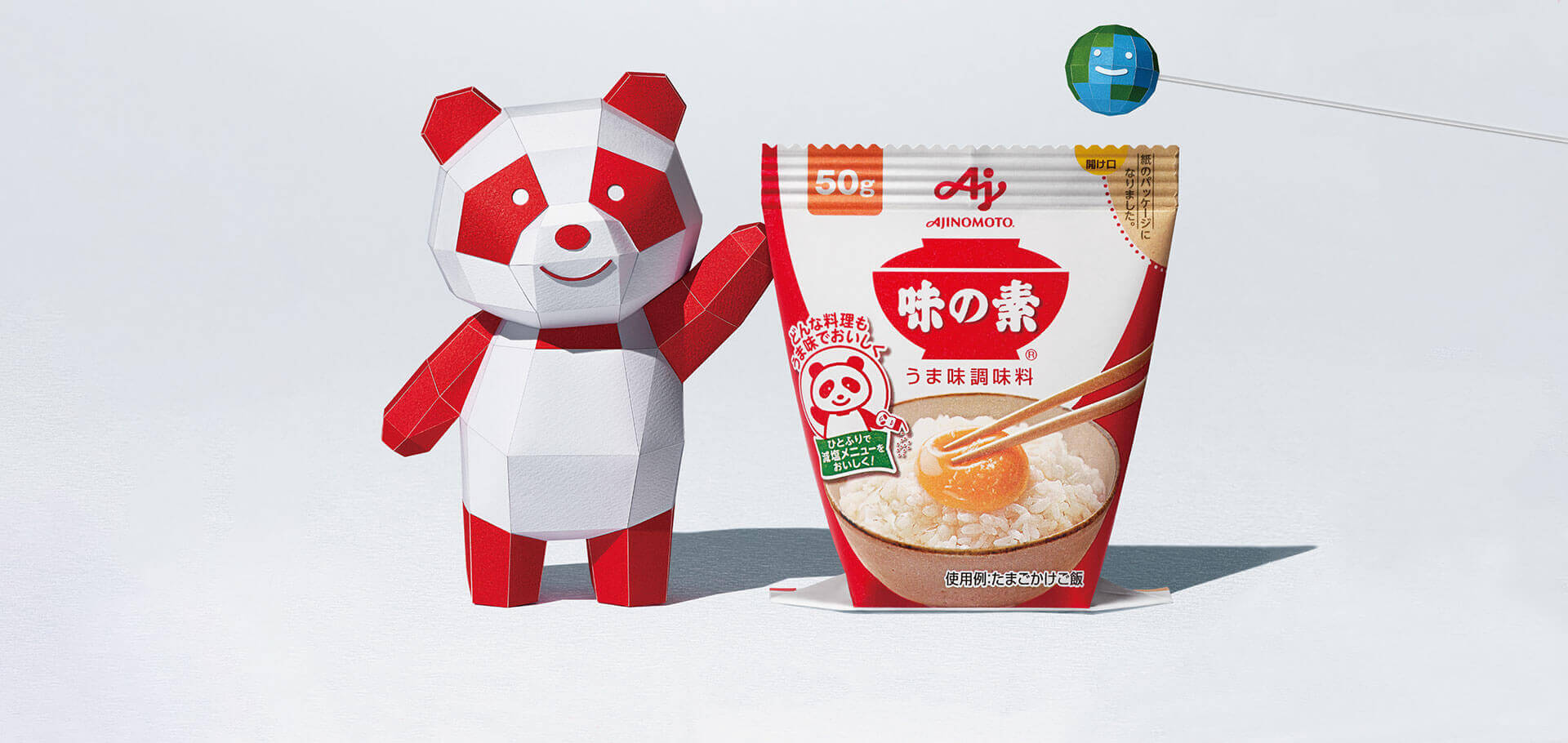
- Reducing plastic waste in packaging MSG products
You may also like

What is lactose fermentation? microorganisms can preserve foods
Do you know how fermentation works? Fermentation is defined as a process whereby microorganisms—bacteria, or fungi such as yeast and mold—cause a beneficial change in an organic substrate.